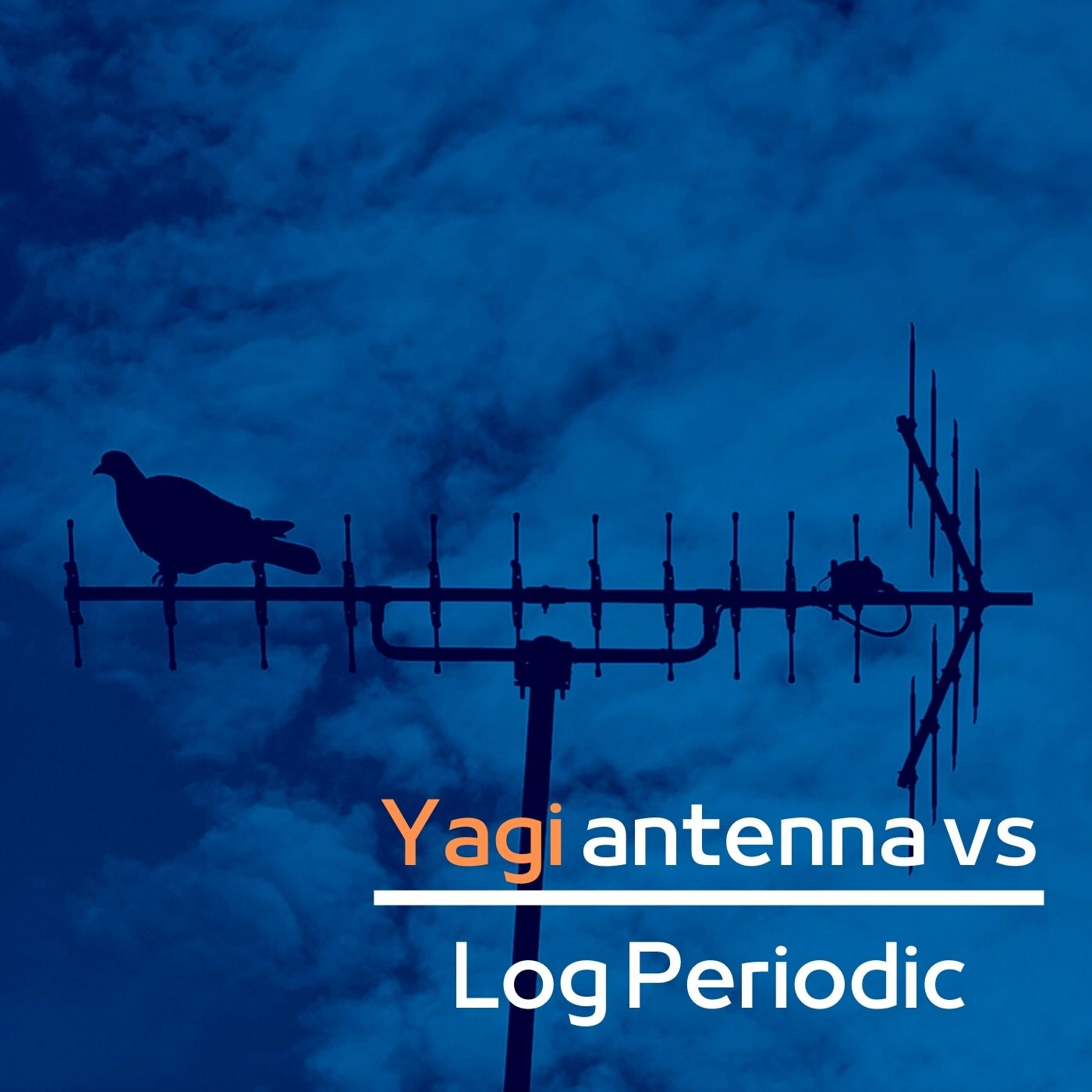What is the difference between the Yagi antenna and the Log periodic antenna? I frequently hear people call large antennas with many elements Yagi antennas. But if you want to be picky, it needs to be corrected. The word directional antenna would have been correct. The name of Hidetsugu Yagi’s invention has been equated with many more directional antennas than just the Yagi antennas.
The Yagi antenna
Invented in 1926 and patented by Hidetsugu Yagi, the Yagi antenna is a directional antenna that focuses power on a single active element or a small group of elements. This design is characterized by directors and reflectors acting as passive radiators and as a lens to concentrate electromagnetic waves. The antenna has become widely used in all kinds of wireless systems worldwide. The Yagi antenna works well within a narrow frequency range, making it particularly useful for radio links or Wi-Fi, but only on a single frequency. Various sizes and shapes of Yagi antennas are available, but they all operate similarly.
The Yagi antenna concentrates as much power as possible on one antenna element or a group of small elements. It is characterized by directors (the smaller elements in front of the active element) and reflectors, which are the elements behind the active element. All these are called passive radiators.
Not all antennas with many lobes are yagi antennas. Sometimes they are log-periodic antennas but named Yagis instead of directional antennas.
The log-periodic antenna
Despite the similarities between log-periodic and Yagi antennas, they have distinct differences that make them suitable for different applications. Yagi antennas are commonly used for narrowband applications as it only uses one narrow frequency band, while log-periodic antennas are preferred for wideband applications, like mobile networks.
Log-periodic antennas have a unique advantage in maintaining a consistent radiation pattern across the entire frequency range, essential for maintaining signal strength and clarity. This makes them ideal for communication systems where multiple frequencies must be transmitted and received.
In summary, while log-periodic antennas may look similar to Yagi antennas, they are electrically distinct and have unique advantages that make them ideal for wideband communication applications.
Hybrid antennas
Now for the confusing part, some antennas are hybrids of Yagi and log-periodic antennas. Especially in terrestrial radio and television, some antennas combine a Yagi antenna for UHF and a log-periodic antenna for other bands. This hybrid type was popular several decades ago and made receiving many bands at once possible. Now the range of use is limited, so you don’t have to worry about a hybrid in Yagi clothing.
The easy way to tell the difference?
The log periodic antennas often consist of two horizontal booms a few centimetres apart and a protective cap at the end of the boom. Yagi antennas often consist of one horizontal boom, and a mixture of materials may be more common, such as aluminium and plastic materials in the blades.
Log-periodic or Yagi?
That depends entirely on how you will use the antenna. If you want something good on one frequency band, choose a Yagi. Otherwise, it is probably a log periodic antenna you are looking for.
Is it ok to call it a Yagi anyway? -Yes, in everyday speech, you can get away with it, but if you want to shine at your next meeting, use the proper term.

